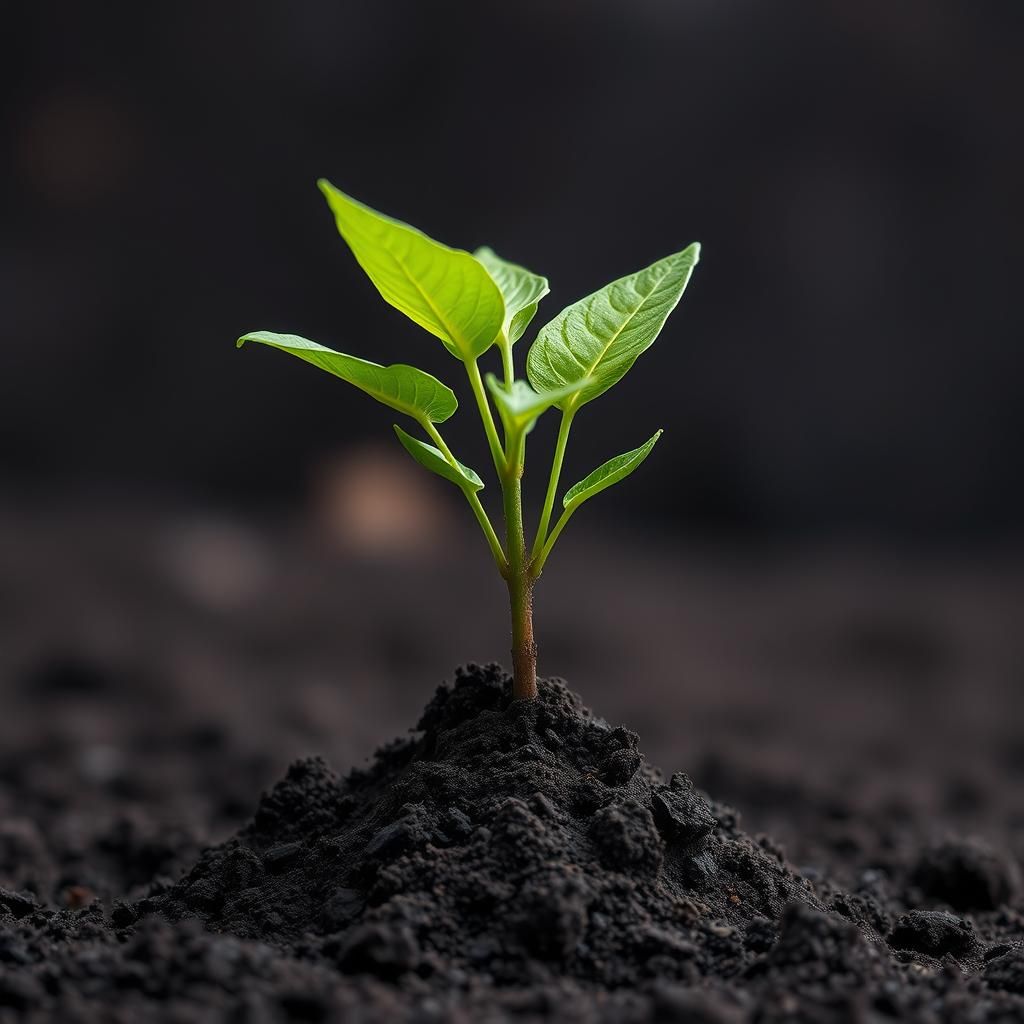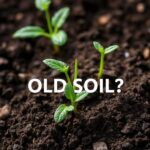What Causes Dirt to Turn Black? Uncovering the Factors Behind Dark Soil Change

Soil is a complex ecosystem that undergoes various transformations over time, with one of the most noticeable changes being its color. This article delves into the intriguing phenomenon of dirt turning black, exploring the underlying factors that contribute to this darkening. From organic matter decomposition to the influence of minerals and environmental conditions, we aim to uncover the scientific explanations behind dark soil change. Understanding these dynamics is crucial for farmers, gardeners, and environmentalists alike, as soil quality directly impacts plant health and biodiversity. Join us as we examine the elements that lead to this enigmatic transformation in soil color.
What Causes Dirt to Turn Black?
Soil can turn black due to several processes, primarily related to the organic material that accumulates within it. The presence of decomposing organic matter, such as dead leaves and other plant material, is a significant factor in darkening the color of the soil. As these materials break down, they release humus, a rich, dark substance that enhances soil fertility and overall health. Additionally, soil composition plays a crucial role; for instance, soils high in iron and manganese oxides can also contribute to a darker hue. Environmental factors, including water content and microbial activity, further influence the soil's coloration, with wet conditions typically accelerating the decomposition process and enhancing the darkening effect.
Role of Organic Matter
Organic matter is a critical component of soil, significantly affecting its color and properties. When plant material decays, it forms humus, which is dark brown to black in color. This substance not only enhances the soil's aesthetic qualities but also improves its nutritional value and moisture retention. Soils rich in organic matter are generally more fertile and support healthier plant growth.
Minerals and Soil Color
The presence of various minerals in the soil can significantly influence its color. Soils with high concentrations of iron can appear reddish or yellowish, while those containing manganese can manifest a black hue. These minerals contribute to a chemical reaction during the decomposition process, which can ultimately lead to a darker overall soil color, indicating an enriched environment for microbial activity and plant growth.
Environmental Influences
Environmental factors, particularly moisture and temperature, can greatly affect how quickly soil darkens. In areas with high humidity, moisture accelerates the breakdown of organic materials, resulting in the formation of humus and other dark compounds. Conversely, dry conditions may hinder decomposition and prolong the soil's lighter color. This interplay between moisture and temperature is crucial in determining the soil's health and nutrient content.
See also:
Microbial Activity
Microbial activity in soil is essential for the decomposition of organic materials, leading to the darkening of the soil. Bacteria and fungi play a vital role in breaking down complex organic substances, releasing nutrients that enrich the soil while also producing humic acids that contribute to a darker color. Increased microbial activity fosters a more robust ecosystem, which can enhance soil structure and fertility over time.
Soil Composition and Texture
The specific composition and texture of soil can also impact its color. Soils with finer textures, such as clay, often appear darker when enriched with organic matter, while coarse-textured soils may retain a lighter color due to lower organic content. The balance of different soil particles, along with their ability to hold moisture, can influence not only the color of the soil but also its overall fertility and suitability for plant growth.
| Factor | Description |
|---|---|
| Organic Matter | Decomposed plant material that contributes to dark soil color and fertility. |
| Minerals | Iron and manganese can affect soil color and influence chemical reactions. |
| Moisture | High humidity accelerates decomposition, leading to darker soil. |
| Microbial Activity | Microbes decompose organic matter, enhancing soil color and nutrient availability. |
| Soil Texture | Fine textures may retain organic matter more effectively, resulting in darker soils. |
Understanding the Role of Organic Matter in Soil Color Changes
The transformation of soil color, particularly the shift to black or darker hues, is largely attributed to the accumulation of organic matter. As plants and other organic materials break down, they release compounds such as humus, which enrich the soil while simultaneously affecting its color. This process is heavily influenced by factors like moisture, microbial activity, and the mineral content of the soil. Regions with high organic content often exhibit a dark topsoil, which not only indicates fertile land but also can be a sign of healthy ecosystem functioning.
The Impact of Microbial Activity on Soil Color
Microbial activity plays a crucial role in the decomposition of organic materials in the soil. As microbes break down plant and animal remnants, they contribute to the formation of humic substances, which are responsible for the dark coloration of soil. Increased microbial populations, often stimulated by moisture and nutrient availability, can significantly enhance this process. Consequently, soils rich in microbial life tend to be darker due to the higher concentration of these organic compounds.
The Influence of Soil Texture on Color Perception
Soil texture can substantially influence how color is perceived in different types of soil. For instance, clay soils often retain more organic matter compared to sandy soils, resulting in a darker appearance. The fine particles in clay create a medium that binds organic material, facilitating the accumulation of humic compounds. In contrast, sandy soils, which allow for faster drainage and less retention of nutrients, may appear lighter and less productive in terms of organic capacity.
See also:
Effects of Moisture Levels on Soil Color
Moisture levels are a significant factor in determining soil color. Wet soils tend to appear darker because the water saturates the soil, enhancing the visual impact of organic matter present. Conversely, during dry conditions, the same soil may appear considerably lighter due to evaporation of moisture, which can lead to the oxidation of iron and other minerals, contributing to a shift in perceived color. Understanding these dynamics is essential, especially in agricultural practices, as it helps in assessing soil health and fertility.
Role of Soil Amendments in Altering Soil Color
Soil amendments such as compost, manure, or peat moss can greatly influence soil color. The introduction of these materials not only enhances soil fertility but also increases the organic content, leading to a darker soil hue. The decomposition of these amendments over time contributes to the accumulation of humic acids, which impart the dark coloration seen in rich, healthy soils. Therefore, utilizing organic amendments is a common practice aimed at improving soil quality and promoting darker soil appearance.
Understanding the Relationship Between Soil Types and Color Variations
Different soil types exhibit varying colors primarily due to their unique mineral compositions. For instance, mollisols, known for their rich organic content, often present a dark brown to black color. This is in stark contrast to entisols, which may appear lighter due to lower organic matter levels. Additionally, the mineral composition, such as the presence of manganese and iron oxides, can affect color variations among soil types. Understanding these differences is essential for effective soil management in agriculture and land use practices.
Questions from Our Readers
What are the common causes of dirt turning black?
Dirt often turns black due to a buildup of organic matter, like decaying leaves or plant residues, which can decompose and form a dark humus. Additionally, the presence of mold or certain types of bacteria can also contribute to the discoloration.
Can environmental factors contribute to black dirt?
Yes, environmental factors such as pollution, excessive moisture, and the type of vegetation nearby can lead to dirt turning black. For instance, areas with high vehicle emissions may see a black residue settle in the soil.
See also:
Is black dirt always a sign of poor soil quality?
Not necessarily. While black dirt can sometimes indicate poor aeration or compaction, it can also signify a healthy accumulation of nutrient-rich organic material, which can promote plant growth and enhance soil quality.
How can I prevent my garden soil from turning black?
To prevent garden soil from turning black, it's essential to manage moisture levels, properly aerate the soil, and regularly remove decomposing organic matter that can lead to mold buildup. Additionally, ensuring proper drainage can help maintain soil health.

If you want to read more articles like What Causes Dirt to Turn Black? Uncovering the Factors Behind Dark Soil Change, we recommend you check out our Soil category.
Leave a Reply
Related Articles